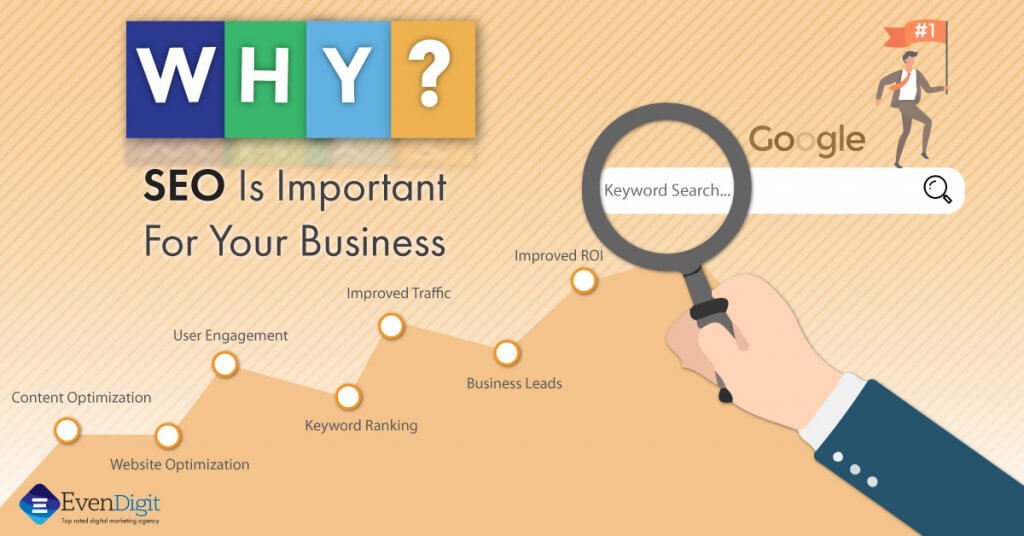Introduction
Local SEO (Search Engine Optimization) is the process of optimizing a business’s online presence to attract more customers from relevant local searches. These searches occur on Google and other search engines when users look for businesses, products, or services near their location. For example, searching “coffee shop near me” or “dentist in [city]” triggers local SEO results. This guide breaks down why local SEO is critical, its components, consequences of neglect, and actionable steps to implement it effectively.
Breaking Down the Problem: Why Local SEO Matters
Local SEO is essential for businesses that rely on local customers, such as retail stores, restaurants, service providers, and professionals like lawyers or doctors. The problem of not prioritizing local SEO can be broken into smaller components:
-
Low Visibility in Local Search Results:
-
Users searching for local services may not find your business if it’s not optimized for local searches.
-
Competitors with better local SEO strategies dominate search results.
-
-
Inaccurate or Incomplete Business Information:
-
Missing or inconsistent business details (name, address, phone number) across online platforms confuse search engines and customers.
-
This leads to reduced trust and missed opportunities.
-
-
Lack of Customer Engagement:
-
Without local SEO, businesses miss out on engaging with nearby customers through reviews, local content, or targeted promotions.
-
Potential customers may not discover your business through map searches or local directories.
-
-
Poor Mobile Search Performance:
-
Many local searches occur on mobile devices, and unoptimized businesses fail to appear in “near me” searches.
-
Mobile users expect instant, location-specific results, and businesses not optimized lose this traffic.
-
Common Causes of Local SEO Challenges

-
Unclaimed or Unoptimized Google Business Profile: Businesses fail to claim or fully optimize their Google Business Profile, missing key opportunities to appear in Google Maps and local search results.
-
Inconsistent NAP (Name, Address, Phone Number): Discrepancies in business information across websites, directories, or social media confuse search engines.
-
Lack of Local Content: Websites lacking location-specific content (e.g., city-based landing pages) fail to rank for local queries.
-
Neglecting Online Reviews: Not encouraging or managing customer reviews reduces credibility and search ranking.
-
Poor Website Optimization: Slow-loading websites, non-mobile-friendly designs, or missing local keywords hinder performance.
-
Ignoring Local Citations: Not listing the business in local directories (e.g., Yelp, Yellow Pages) limits visibility.
Consequences of Not Addressing Local SEO
Failing to prioritize local SEO can have significant consequences:
-
Lost Revenue: Customers go to competitors who appear higher in local search results.
-
Reduced Foot Traffic: Physical stores see fewer visitors due to low visibility in map searches.
-
Damaged Reputation: Inconsistent information or negative, unmanaged reviews erode customer trust.
-
Competitive Disadvantage: Competitors with strong local SEO strategies capture the majority of local market share.
-
Lower ROI on Marketing: Without local SEO, other marketing efforts (e.g., social media, ads) are less effective due to poor online discoverability.
Actionable Step-by-Step Solution to Implement Local SEO
Below is a comprehensive, step-by-step guide to resolve local SEO issues and boost visibility.
Step 1: Claim and Optimize Your Google Business Profile
-
Action: Claim your business on Google Business Profile (GBP) at business.google.com.
-
Details:
-
Verify your business through Google’s verification process (via mail, phone, or email).
-
Complete all fields: business name, address, phone number, website, hours, category, and description.
-
Add high-quality photos of your business (e.g., storefront, interior, products).
-
Use relevant keywords in the description (e.g., “best Italian restaurant in Chicago”).
-
-
Tools: Google Business Profile (free).
-
Example: A local bakery in Austin claimed its GBP, added photos of fresh pastries, and included keywords like “Austin artisan bakery.” Within weeks, it appeared in the top 3 local pack results for “bakery near me.”
Step 2: Ensure NAP Consistency Across Platforms
-
Action: Audit and standardize your business’s Name, Address, and Phone Number (NAP) across all online platforms.
-
Details:
-
Check major directories like Yelp, Yellow Pages, Bing Places, and social media profiles.
-
Use the exact same NAP format everywhere (e.g., “123 Main St” vs. “123 Main Street”).
-
Update any outdated information.
-
-
Tools: Moz Local or BrightLocal for NAP consistency checks ($99-$299/year).
-
Example: A plumber in Seattle found inconsistent addresses across Yelp and Facebook. After standardizing NAP using Moz Local, their local search rankings improved by 20%.
Step 3: Optimize Your Website for Local SEO
-
Action: Enhance your website with local keywords and mobile-friendly design.
-
Details:
-
Create location-specific landing pages (e.g., “Plumbing Services in Seattle”).
-
Include local keywords in title tags, meta descriptions, headers, and content (e.g., “Seattle plumbing repair”).
-
Ensure your website is mobile-responsive and loads in under 3 seconds.
-
Add a Google Maps embed of your location and schema markup for local business (use Schema.org).
-
-
Tools: Yoast SEO plugin (free-$99/year) for WordPress, Google PageSpeed Insights (free) for speed optimization.
-
Example: A Denver law firm created a page titled “Denver Personal Injury Attorney” with local keywords and schema markup. Their organic traffic increased by 30% in three months.
Step 4: Build and Manage Local Citations
-
Action: List your business in reputable local directories and citation sites.
-
Details:
-
Submit your business to directories like Yelp, TripAdvisor, and industry-specific platforms (e.g., Healthgrades for doctors).
-
Ensure NAP consistency in each listing.
-
Monitor and update citations regularly.
-
-
Tools: BrightLocal or Yext ($199-$499/year) for citation management.
-
Example: A Chicago gym listed itself on Yelp, Yellow Pages, and local fitness directories. This boosted their local visibility, resulting in a 15% increase in memberships.
Step 5: Encourage and Manage Customer Reviews
-
Action: Actively request reviews and respond to them professionally.
-
Details:
-
Ask satisfied customers to leave reviews on Google, Yelp, and Facebook.
-
Send follow-up emails or texts with direct review links.
-
Respond to all reviews (positive and negative) to show engagement.
-
Avoid fake reviews, as they violate Google’s policies.
-
-
Tools: Review management tools like Podium or Birdeye ($249-$499/month).
-
Example: A San Diego restaurant implemented a review request campaign via email. They gained 50 new Google reviews in two months, improving their local pack ranking.
Step 6: Create Local Content and Build Backlinks
-
Action: Publish location-specific content and earn backlinks from local sources.
-
Details:
-
Write blog posts about local events, news, or community involvement (e.g., “Top 5 Hiking Trails in Phoenix”).
-
Partner with local businesses or charities for cross-promotion and backlinks.
-
Submit guest posts to local blogs or news sites.
-
-
Tools: SEMrush ($129-$499/month) for keyword research, BuzzStream ($24-$299/month) for outreach.
-
Example: A Miami spa published a blog post about “Best Wellness Events in Miami 2025” and earned backlinks from local event sites, boosting their domain authority.
Step 7: Track and Monitor Local SEO Performance
-
Action: Use analytics tools to measure progress and adjust strategies.
-
Details:
-
Track local rankings, website traffic, and conversions using Google Analytics and Google Search Console.
-
Monitor GBP insights for search impressions, clicks, and calls.
-
Adjust strategies based on data (e.g., target new keywords if rankings stagnate).
-
-
Tools: Google Analytics (free), Google Search Console (free), Moz Pro ($99-$599/month).
-
Example: A Portland coffee shop used Google Analytics to track a 25% increase in website visits from local searches after optimizing their GBP and website.
Case Study: Real-World Success with Local SEO
Business: Bella’s Pizzeria, a small restaurant in Raleigh, NC. Problem: Bella’s struggled with low foot traffic and poor visibility in Google’s local pack. Solution:
-
Claimed and optimized their Google Business Profile with photos, keywords, and updated hours.
-
Standardized NAP across Yelp, TripAdvisor, and Facebook.
-
Created a landing page titled “Best Pizza in Raleigh” with local keywords and schema markup.
-
Encouraged reviews via email campaigns, gaining 40 new Google reviews.
-
Published a blog post about “Raleigh Food Festivals” and earned backlinks from local blogs. Results: Within six months, Bella’s ranked in the top 3 for “pizza near me” in Raleigh, saw a 35% increase in foot traffic, and increased online orders by 20%.
Additional Tips to Prevent Local SEO Issues
-
Regular Audits: Conduct quarterly audits of your GBP, NAP consistency, and website performance.
-
Stay Active on Social Media: Post about local events or promotions to engage the community.
-
Monitor Competitors: Use tools like Moz or SEMrush to analyze competitors’ local SEO strategies.
-
Leverage Local Ads: Run Google Ads with location extensions to boost visibility.
-
Update Regularly: Keep business hours, services, and contact details current, especially during holidays.
Next Steps and Call to Action
-
Start Today: Claim or audit your Google Business Profile immediately to ensure accuracy.
-
Invest in Tools: Sign up for Moz Local or BrightLocal to streamline NAP consistency and citation building.
-
Engage Customers: Send review requests to recent customers this week.
-
Hire Experts if Needed: If overwhelmed, consult a local SEO agency or freelancer via platforms like Upwork.
-
Track Progress: Set up Google Analytics and GBP insights to monitor results within 30 days.
